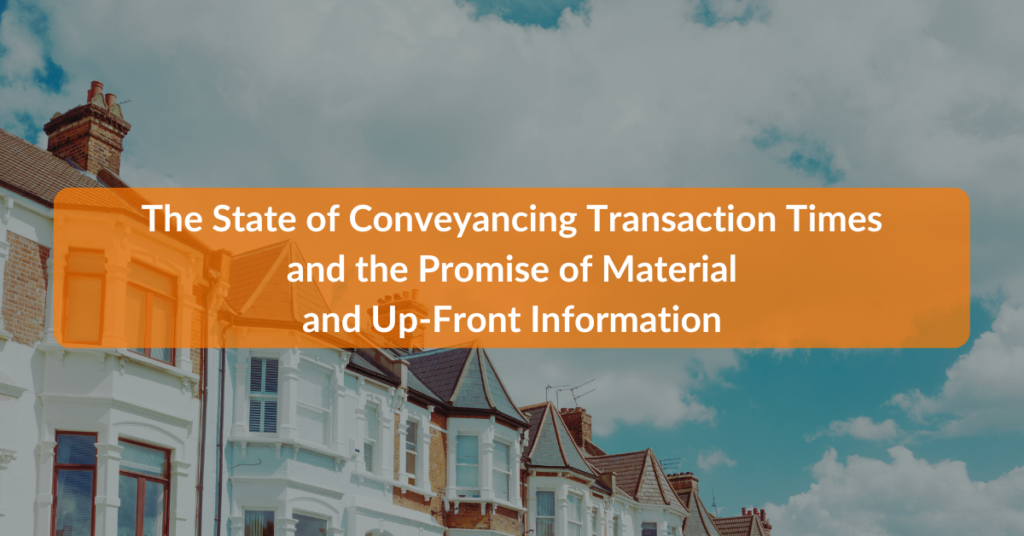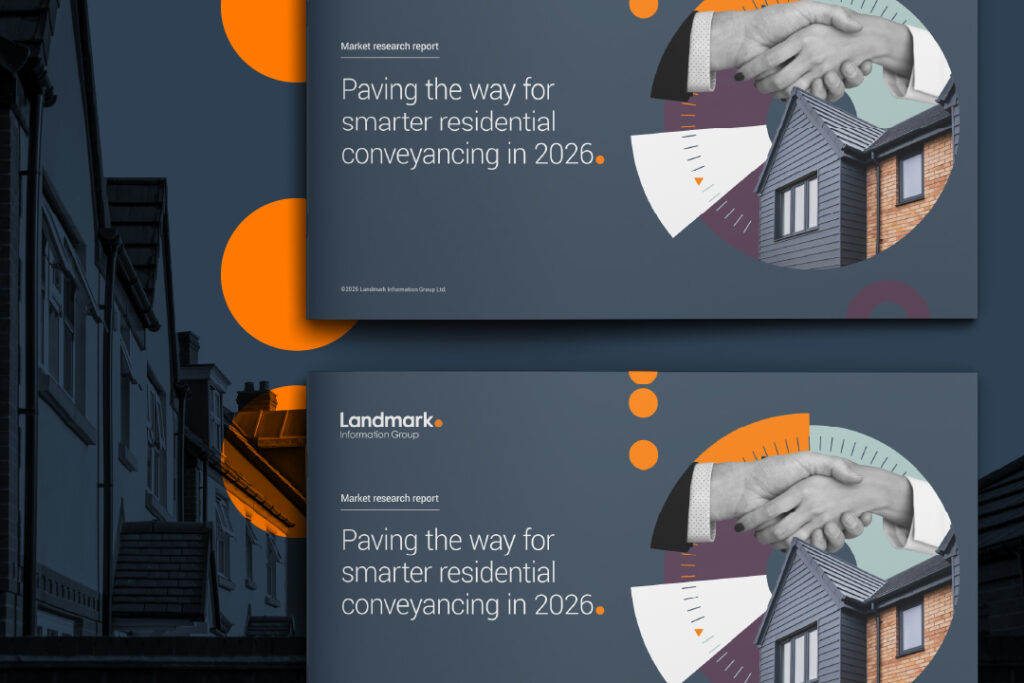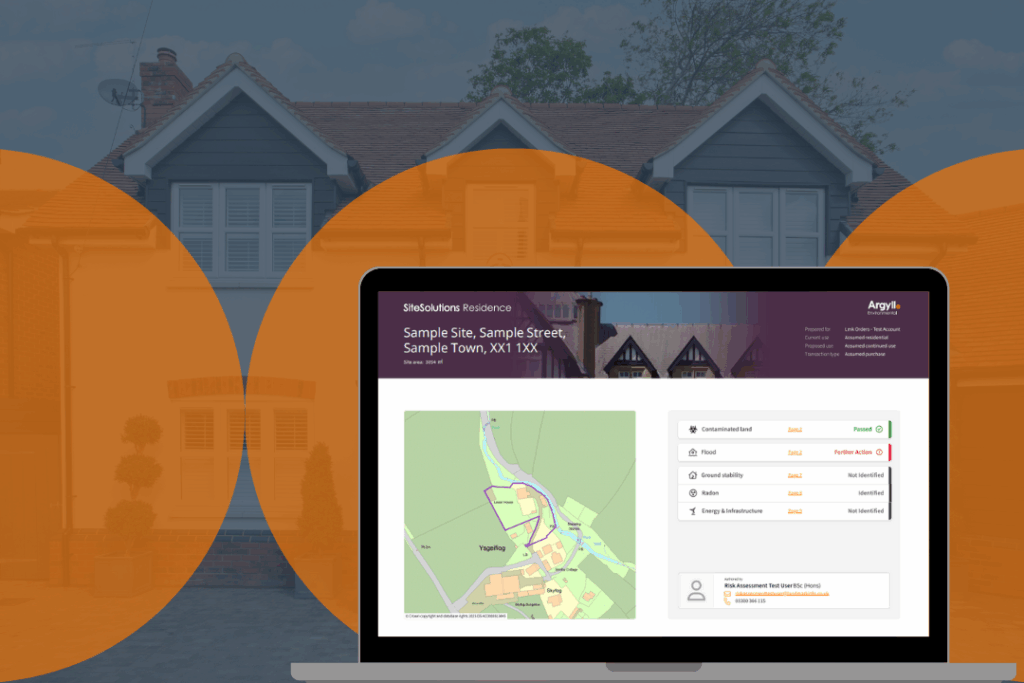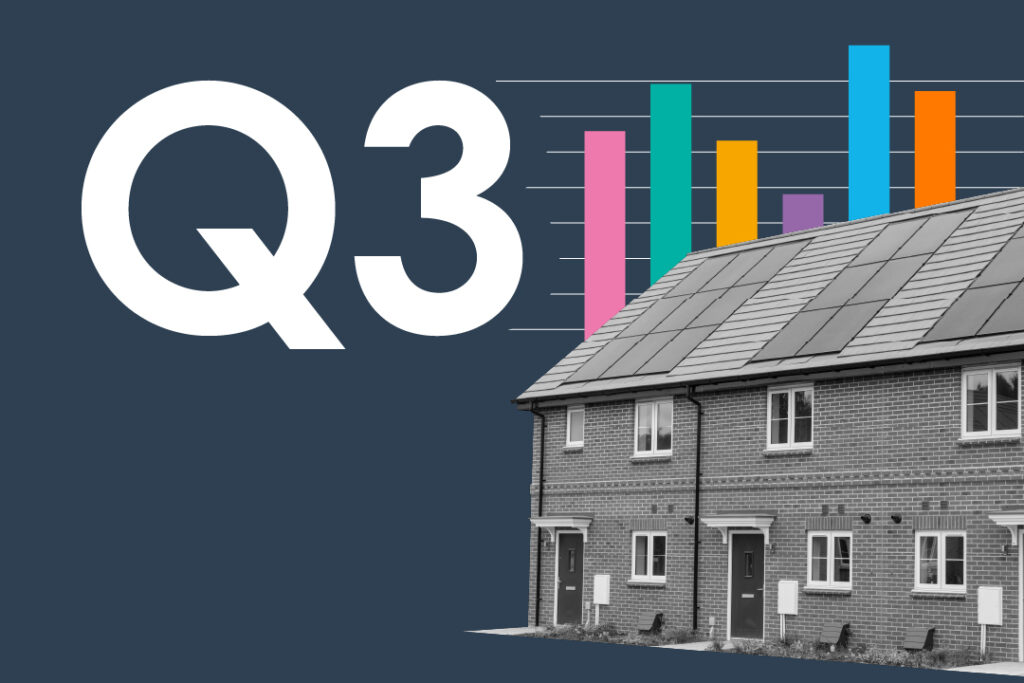
The first theme of National Conveyancing Week 2024 focuses on the exciting and untapped opportunity of material and up-front information to reduce transaction delays and drive efficiency in conveyancing.
There is no doubt that change is needed. Depending on who you speak to, transactions are currently taking place in the region of 20-22 weeks on average, and this is only increasing. In this article, we will ask whether the current transaction times are a matter of embarrassment and what is holding us back from leveraging material and upfront information in conveyancing.
A matter of embarrassment?
Those within the UK’s property sector are acutely aware of the protracted transaction times in 2024. The truth is that conveyancers are working harder than ever to achieve completion as early as possible. One recent opinion from within the industry has ruffled a few feathers. Ruth Beeton, co-founder of Home Sale Pack, is quoted as having stated:
“The UK boasts one of the strongest and most desirable property markets on the global stage, but despite our obsession with bricks and mortar, our protracted property transaction timeline is quite frankly embarrassing”.
This is an understandable point of view, but should we really be embarrassed?
Robin Wells, Head of Sales Operations for OneSearch, takes the view that transaction times are frustrating rather than embarrassing:
“Yes, it is frustrating. In 2011, 12 weeks was kind of the expected time for a standard residential conveyance to go through from notification to completion. I think we’re now looking at 20, 22 weeks”.
Elizabeth Jarvis, Managing Director of OneSearch, believes that there are some valid reasons for the length of completion times which are often overlooked:
“I think that it’s the fact that it’s [transaction times] increasing, which is uncomfortable to be in an industry where despite everybody’s best efforts, we can’t seem to get it together to get that back down to where it was a number of years ago. I know that there are some very valid reasons for it that there’s a lot more diligence, and things have crept into the process”.
This raises an important point; the increase in property transaction times, in part, is due to the greater lengths that conveyancers now go to protecting homebuyers and sellers and, ultimately, the reputation of the sector as a whole (i.e. due diligence checks, AML and KYC).
What will enable the proper adoption of upfront information?
One of the frustrations with the state of transaction times is that the promise of technology has not yet led to a wholesale improvement in the experience of property buyers and sellers. Elizabeth Jarvis believes that where upfront information has not taken hold in the past, there are now strong indications that technology will be a key enabler:
“I think now, from what I can see, is chinks of light where there is some better communication, and I think there’s a lot more general interest from the conveyancing sector in technology and re-looking at that technology which obviously is going to work a lot better now than when it was first conceived. I think, broadly speaking, we would all agree that the whole concept of having data upfront is a good one. There were reasons why it didn’t quite work the way it was hoped. But I think that it’s seen a return to that is happening”.
Elizabeth also takes the view that the key to making upfront information work and to bringing down transaction times is the use of technology to connect all stakeholders in the process:
“It’s no good to have upfront data if everybody in the process isn’t making use of it and they’re not speaking to each other. It’s the interconnectedness, the connectivity of people in the process working together with it”.
Final words
The fact that upfront data is first on the agenda for the National Conveyancing Week 2024 is extremely positive news for the UK’s conveyancing sector. What is now needed is for all senior stakeholders to come together to create a unified strategy for improved conveyancing efficiency using the latest technology as a foundation to enable the full use of material and upfront information. As Elizabeth Jarvis says, the good news is that there are strong signals that this is already happening.
Related Articles

A Year of Connections: OneSearch and PropertyFace2Face

Paving the way for smarter residential conveyancing in 2026

OneSearch Christmas Opening Times

The Real Cost of Missing Data Pieces (…And How Our Triple Check Fixes It)

Green fields, hidden risks: Why the SiteSolutions Farm report is vital for rural land buyers

The SiteSolutions Residence report: Your key to a safer, smarter property purchase

7 reasons conveyancers choose OneSearch Prime

Landmark residential property trends report Q3 ‘25

The heart of OneSearch: The dedicated team behind our unwavering customer service

